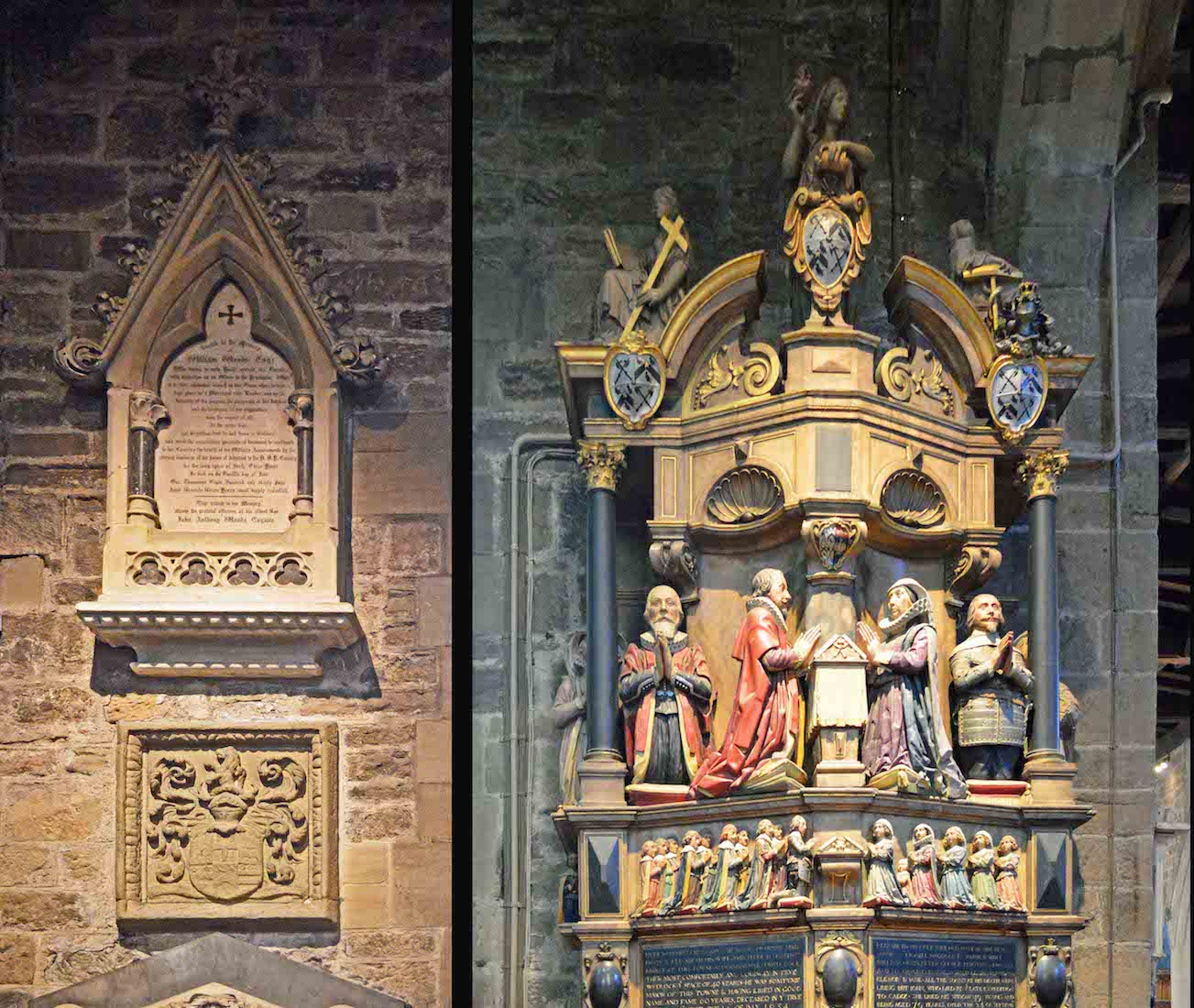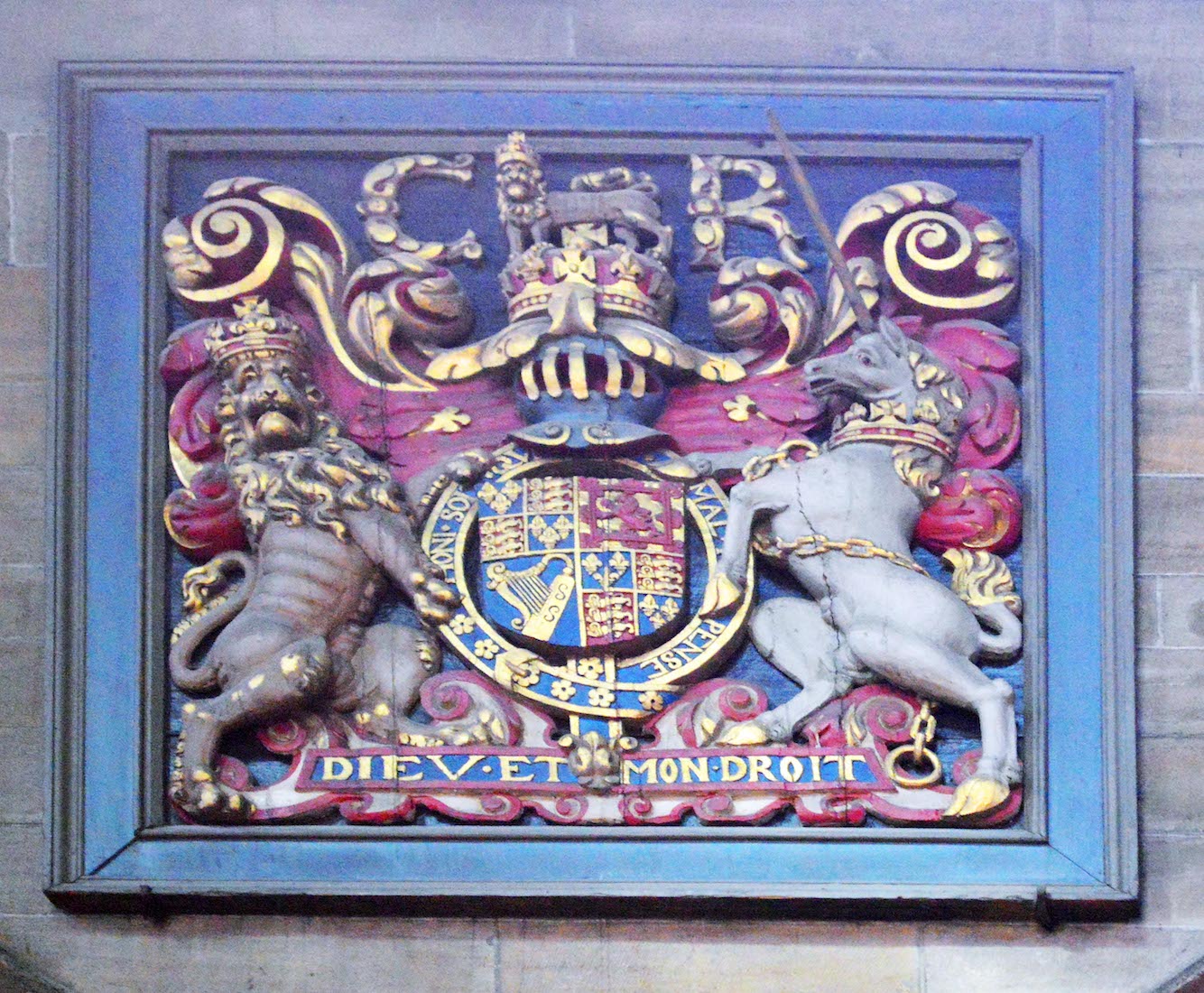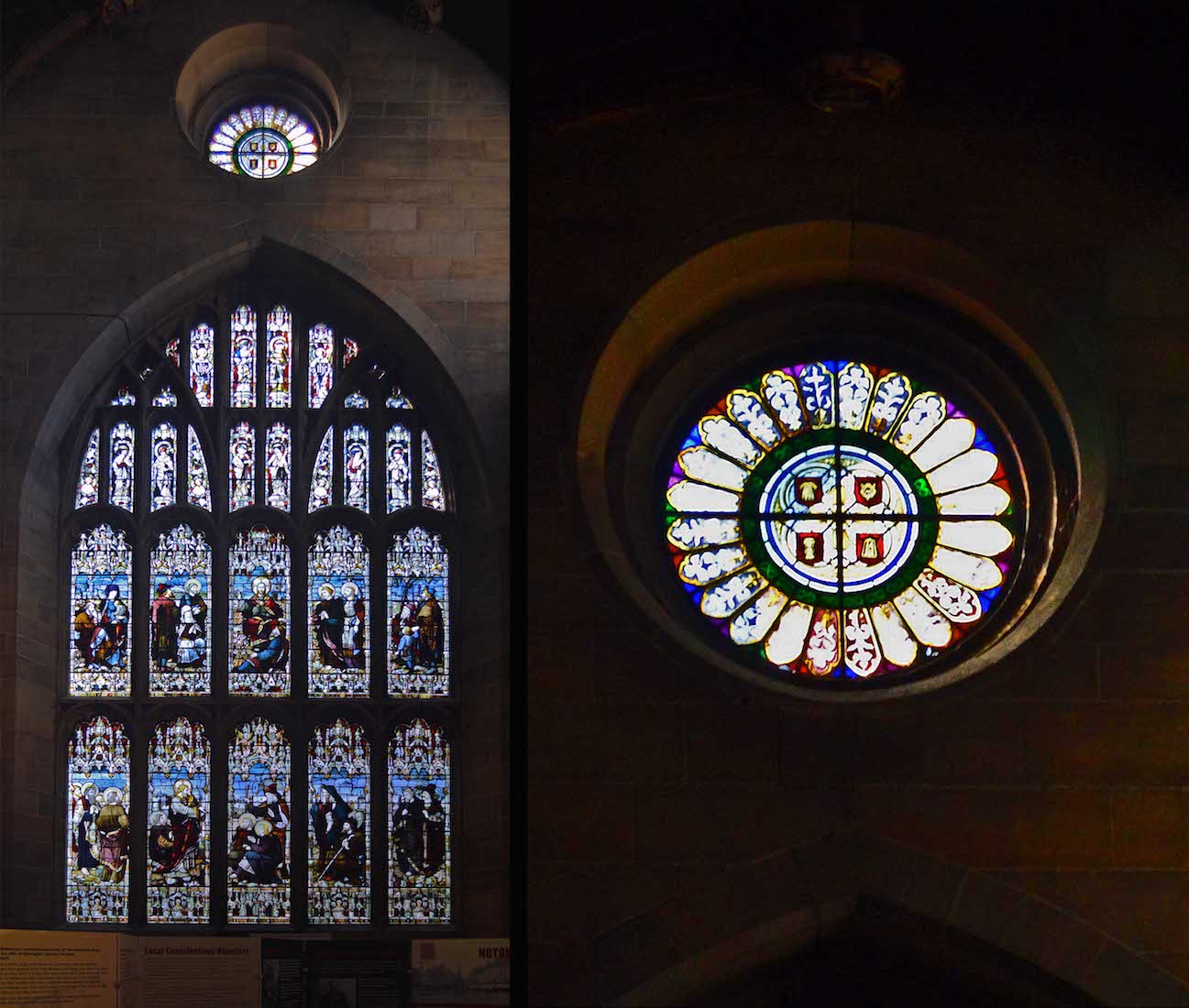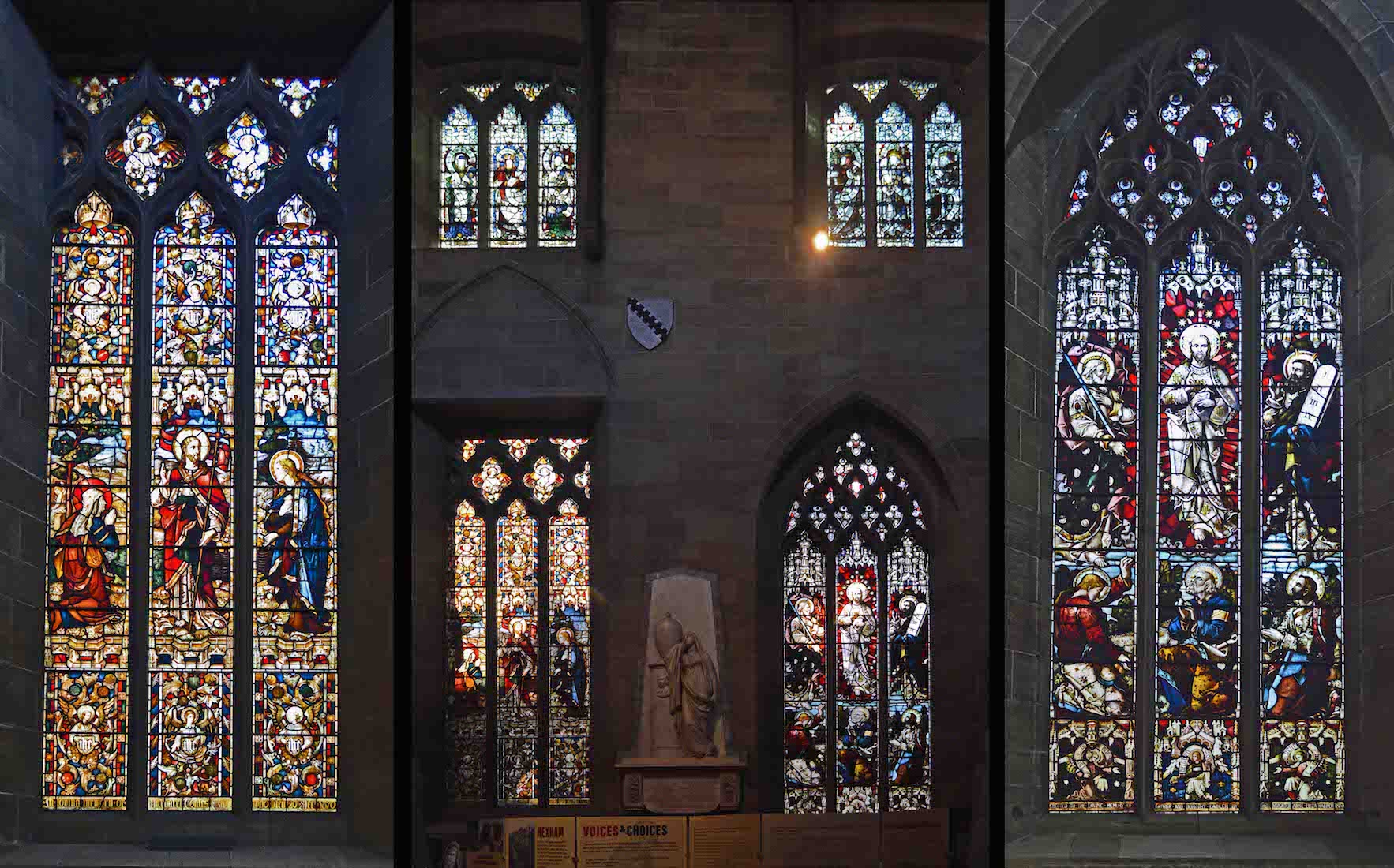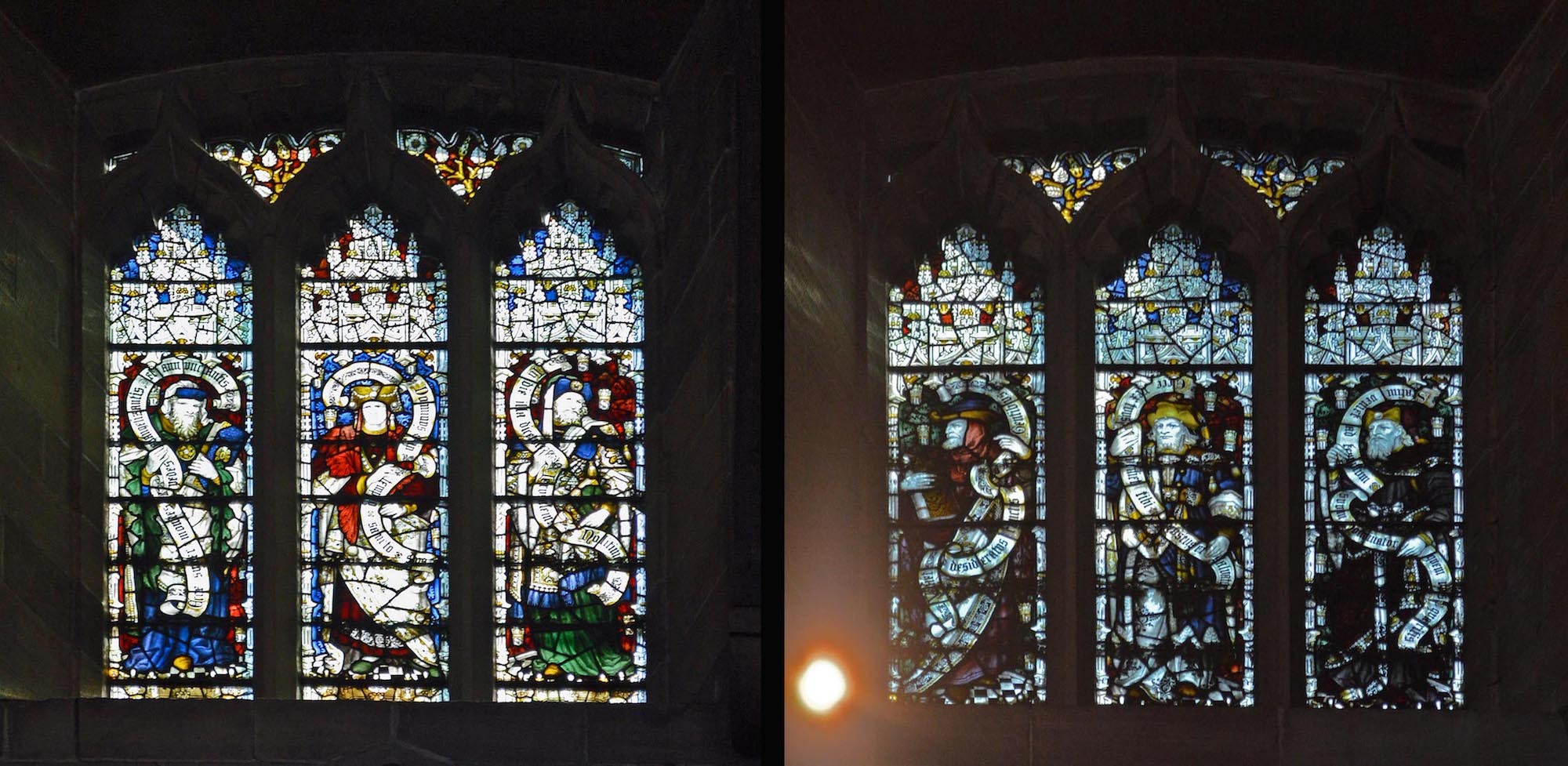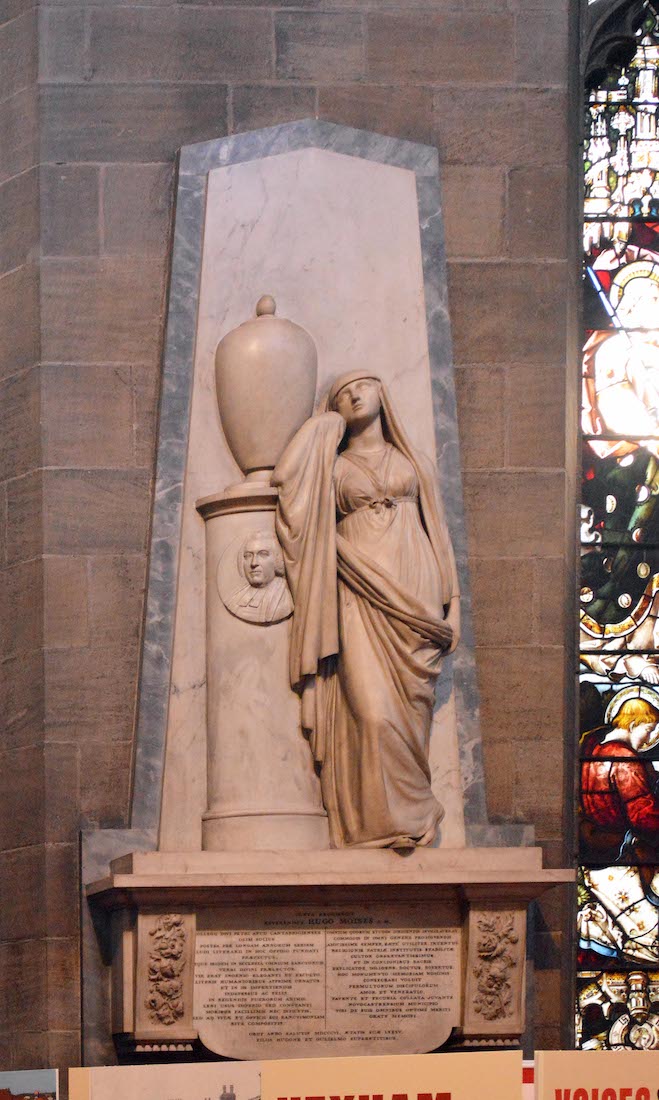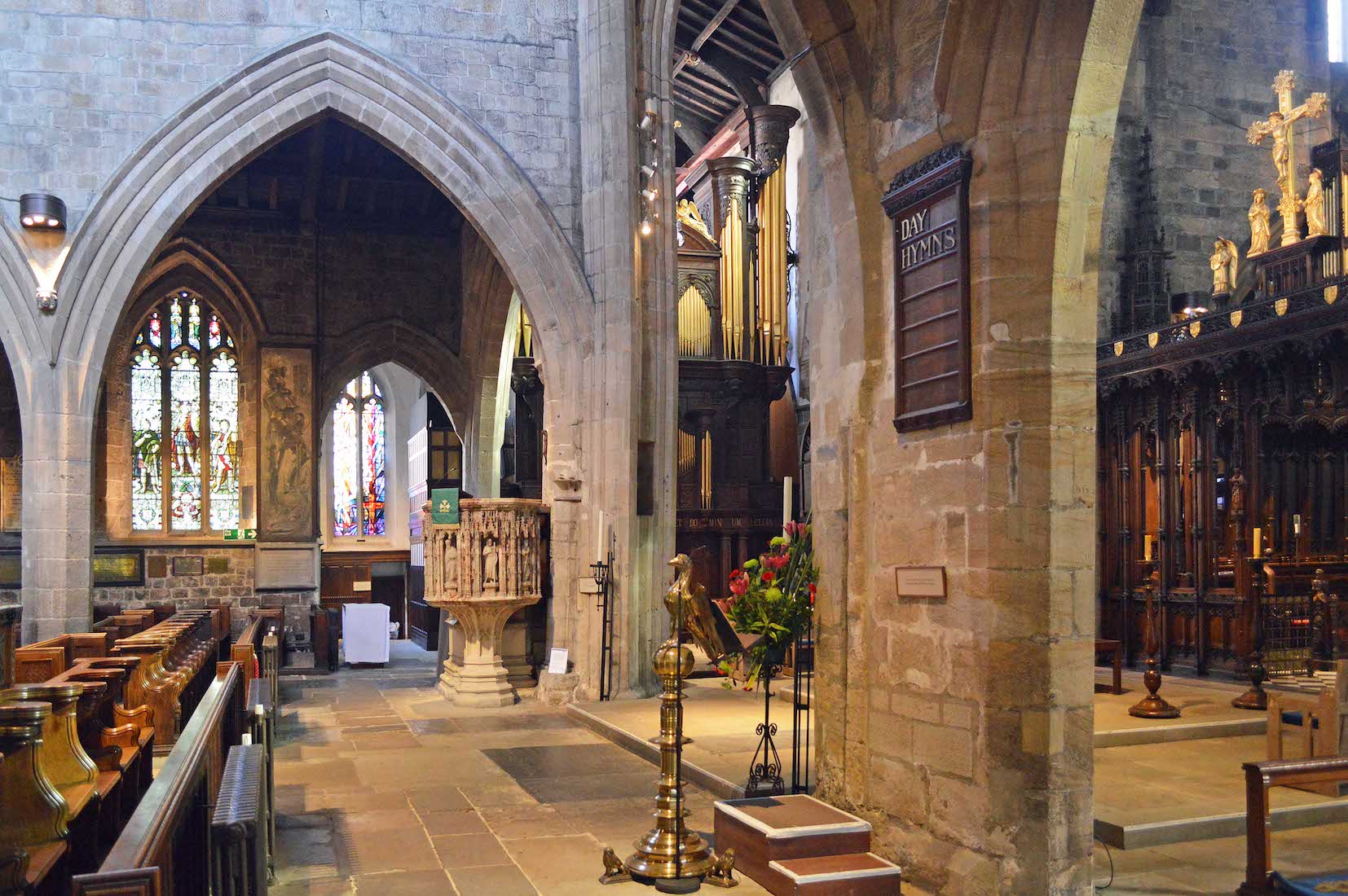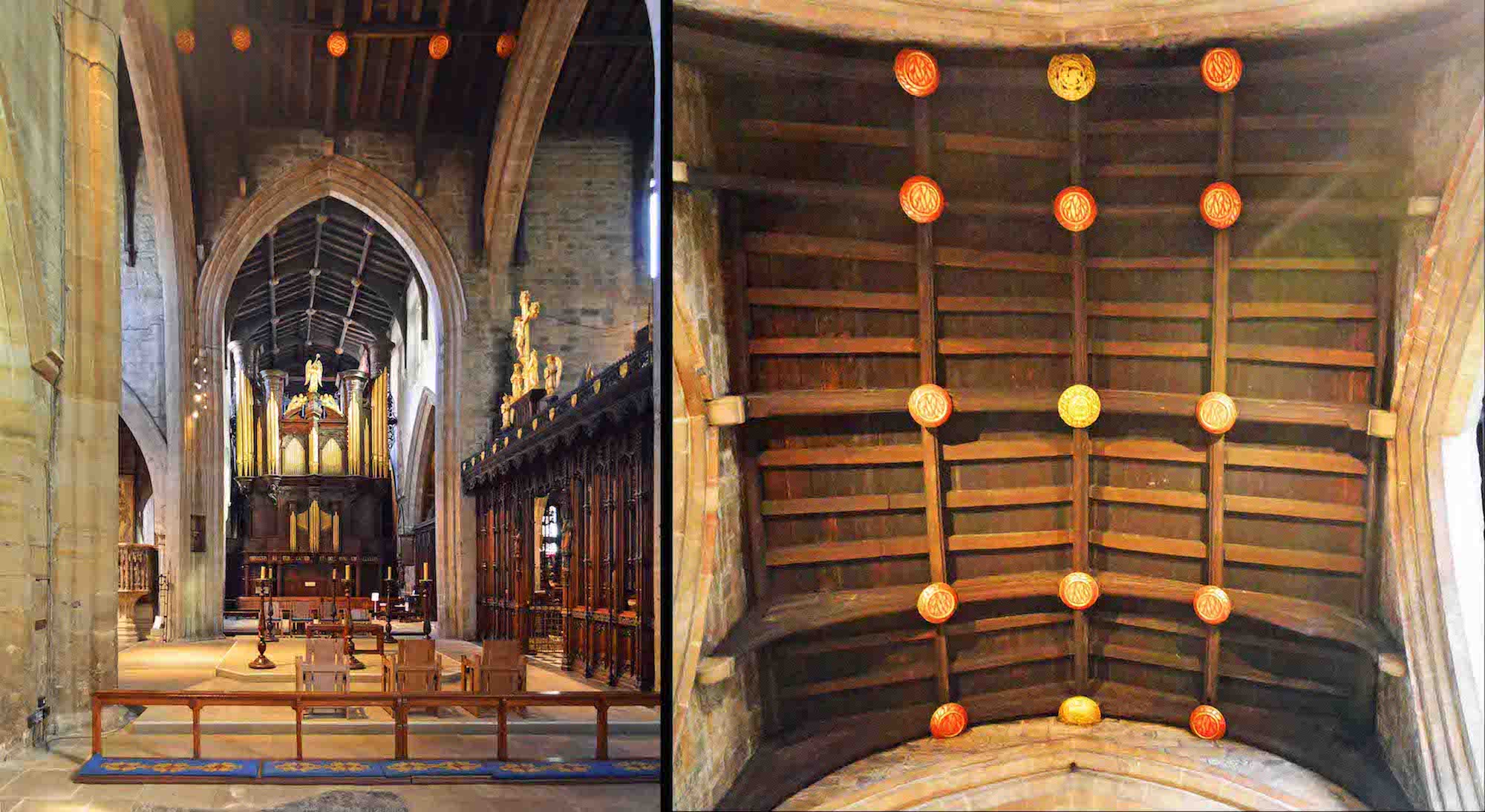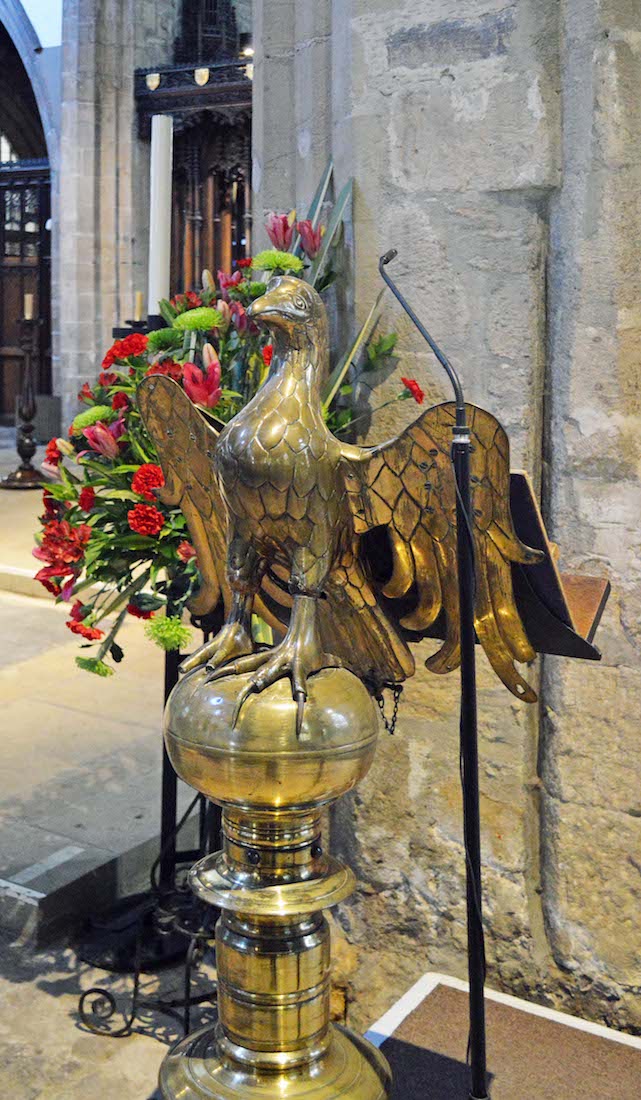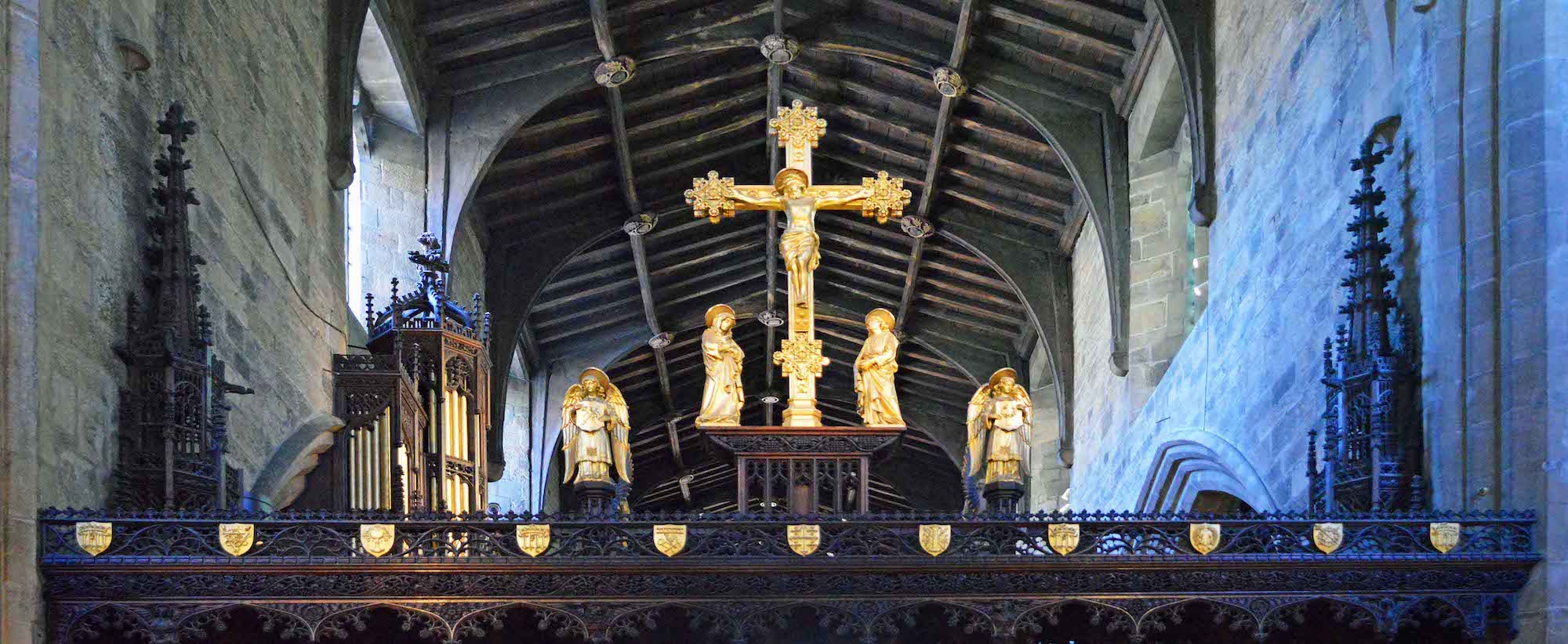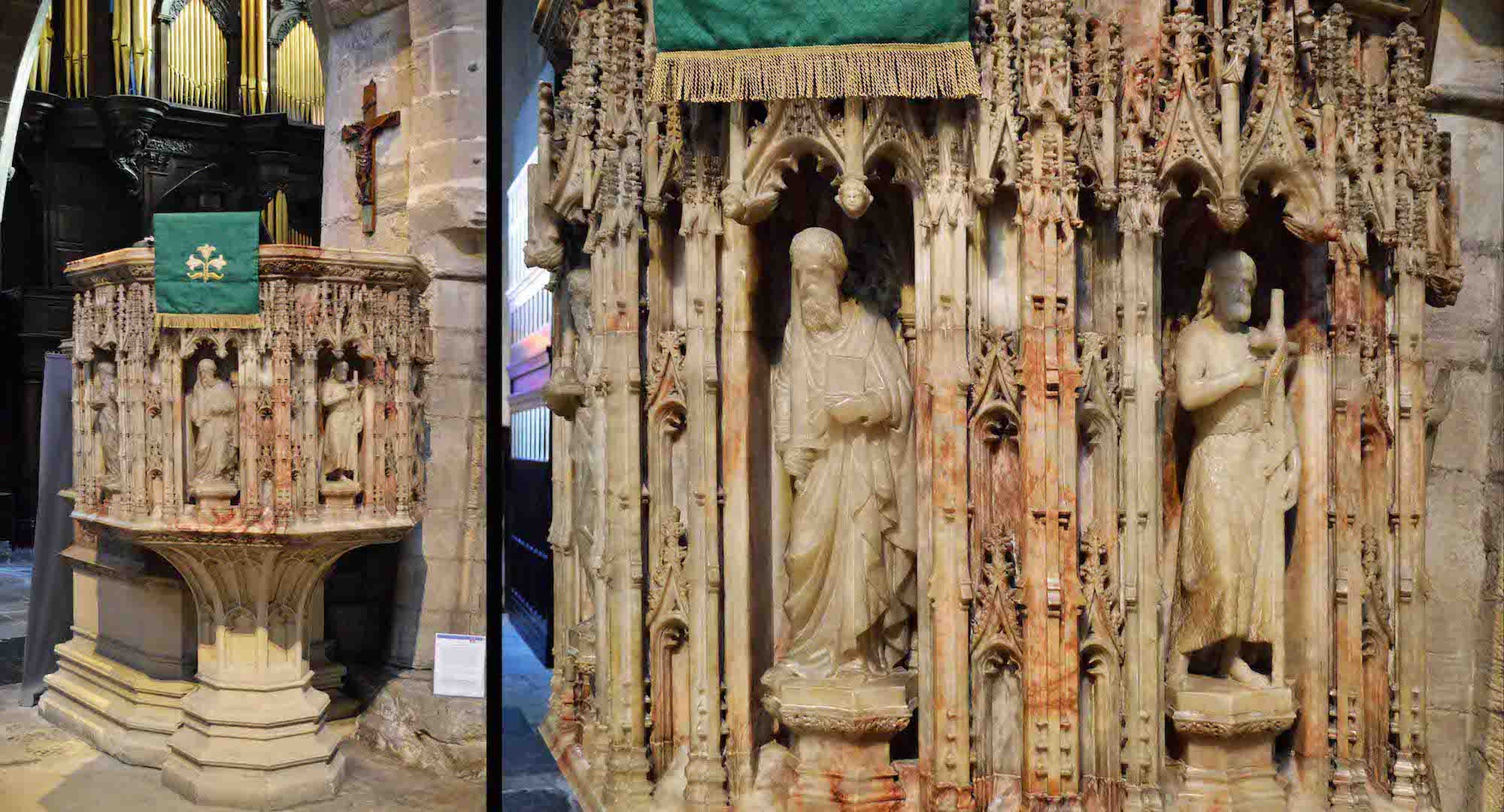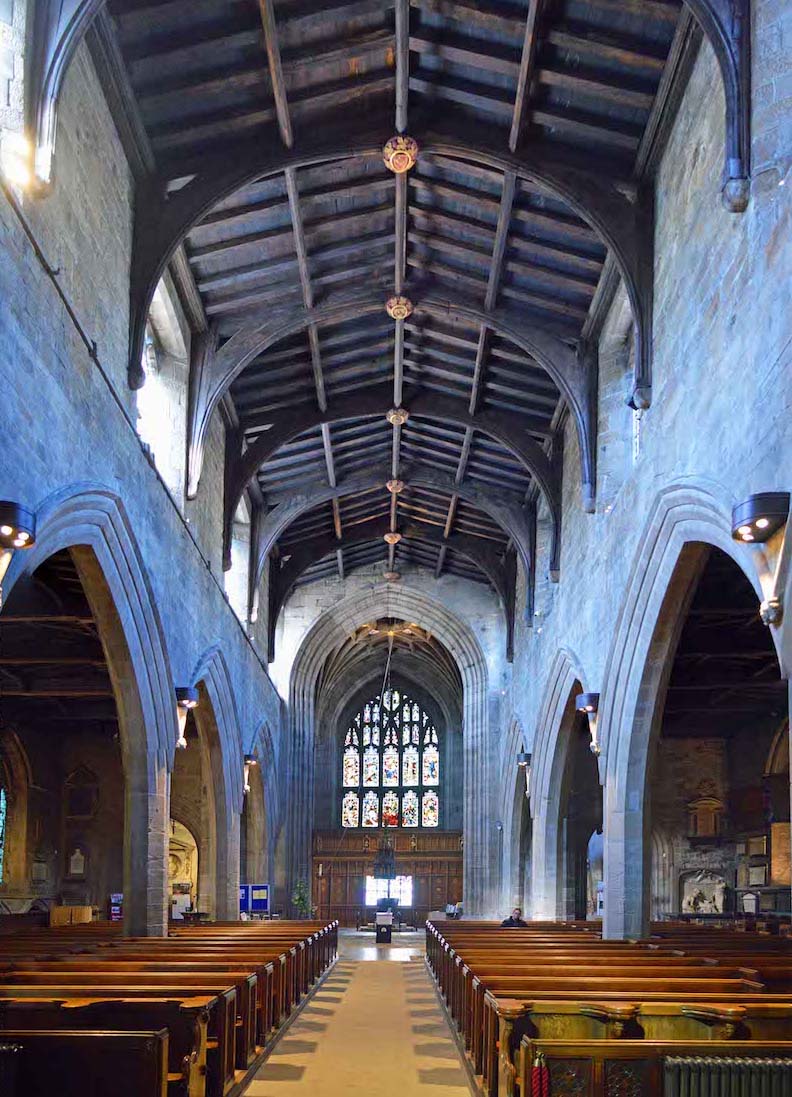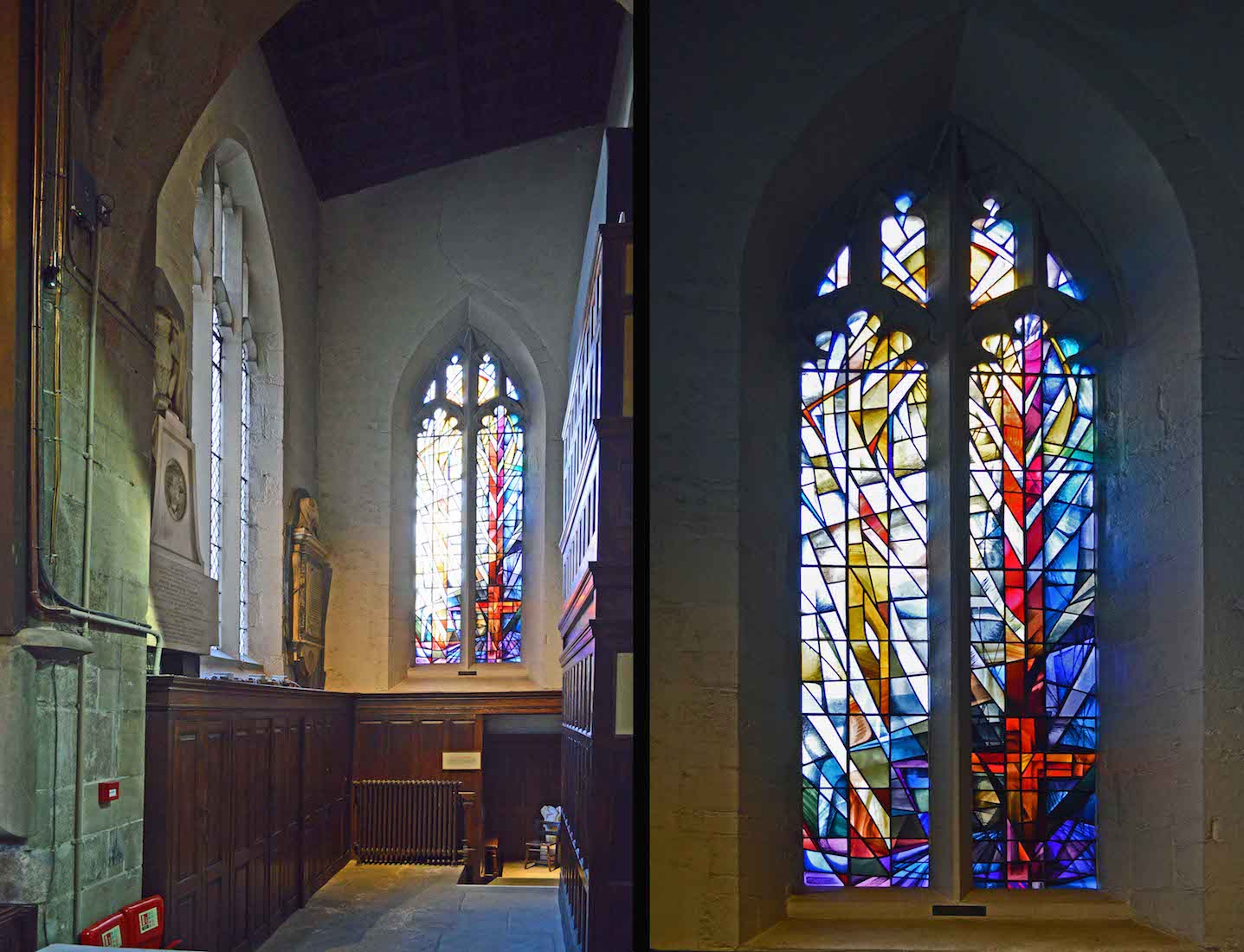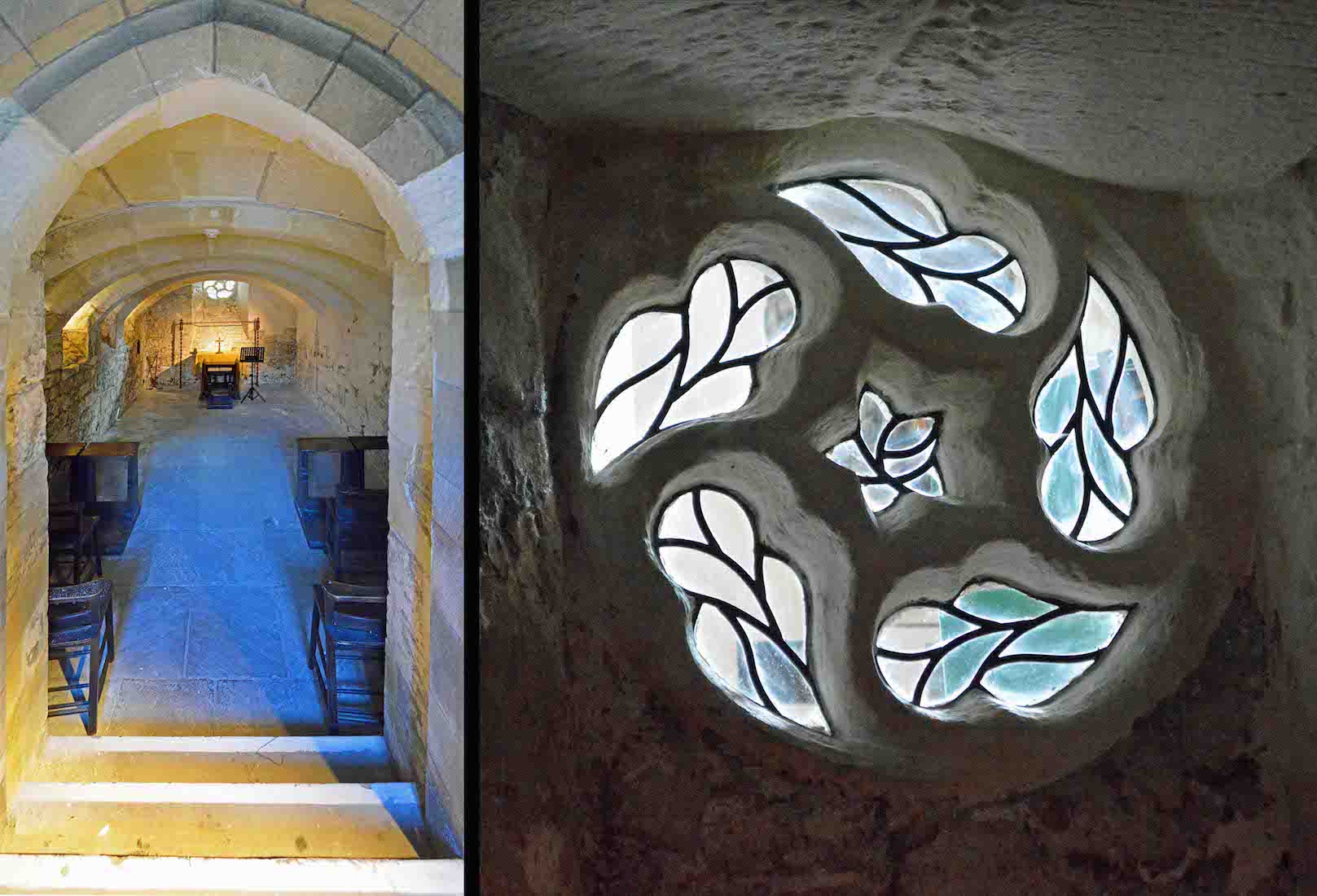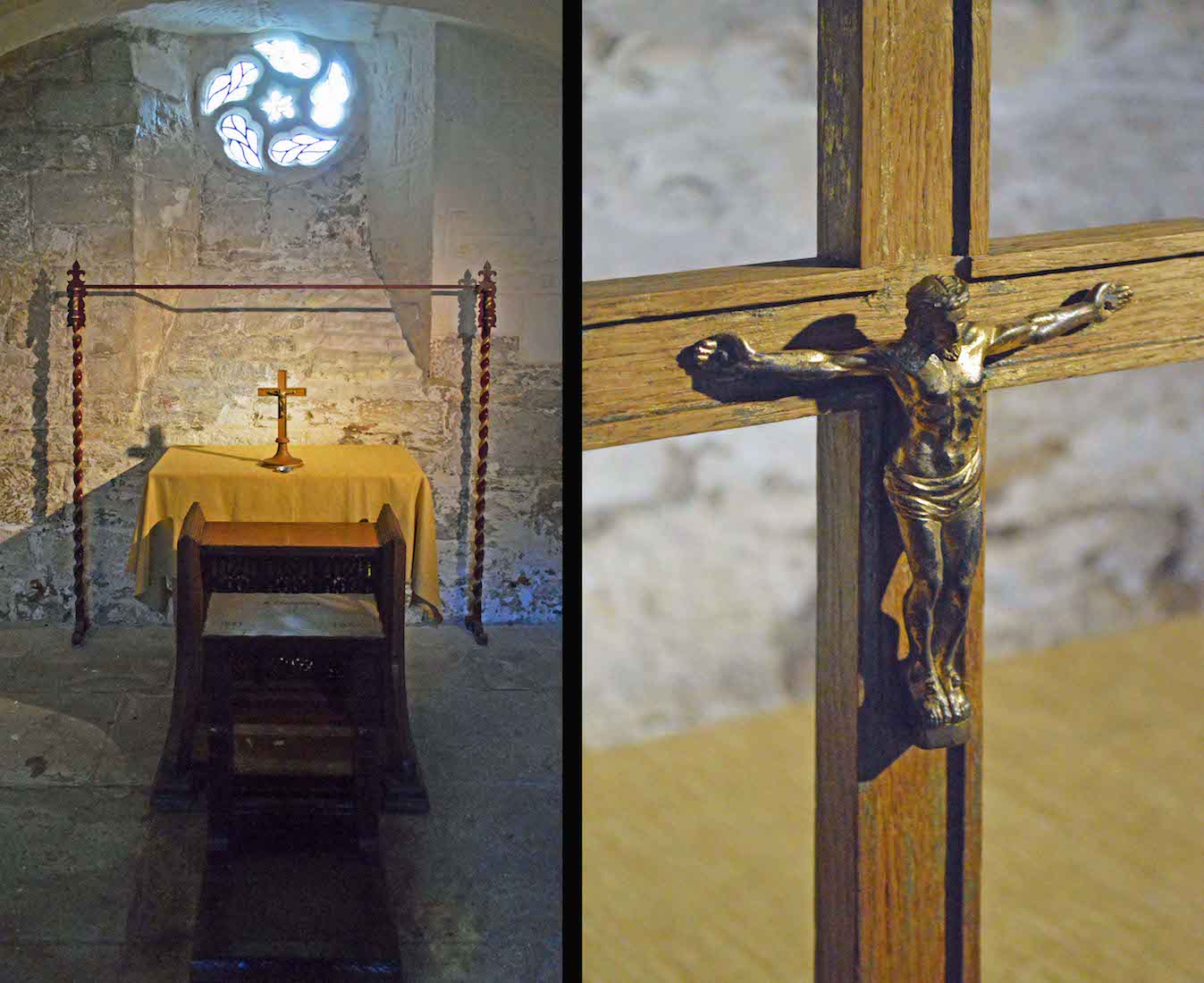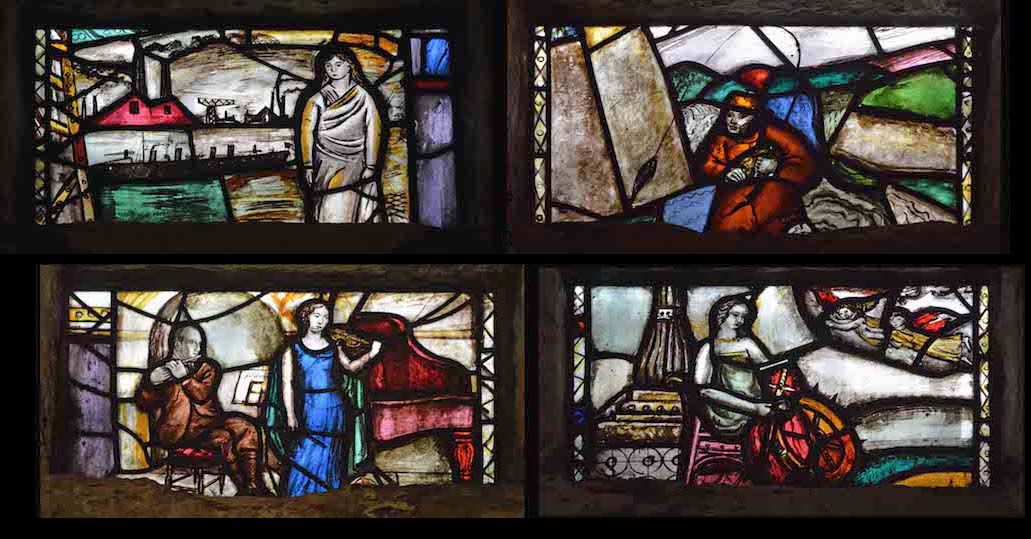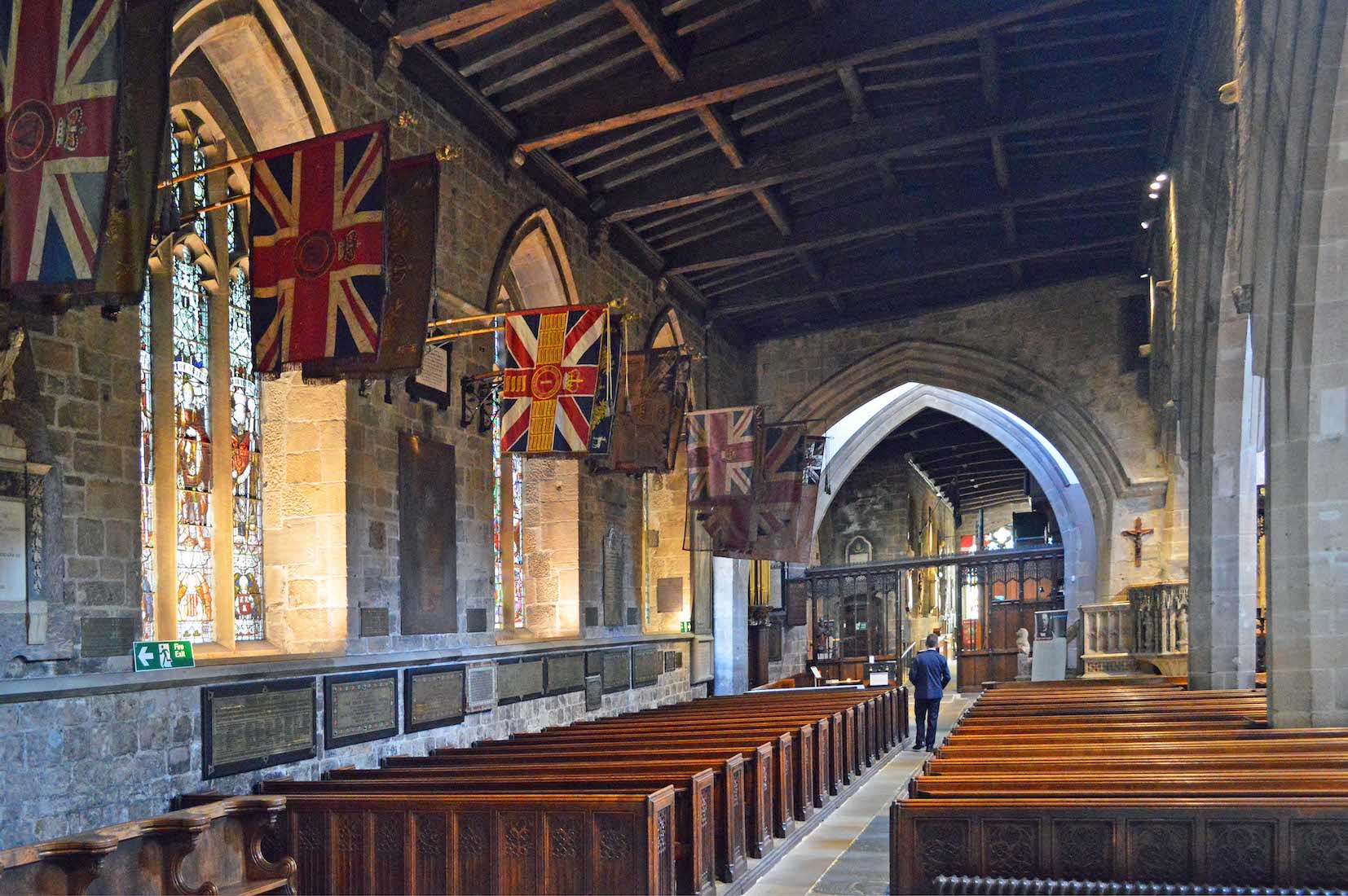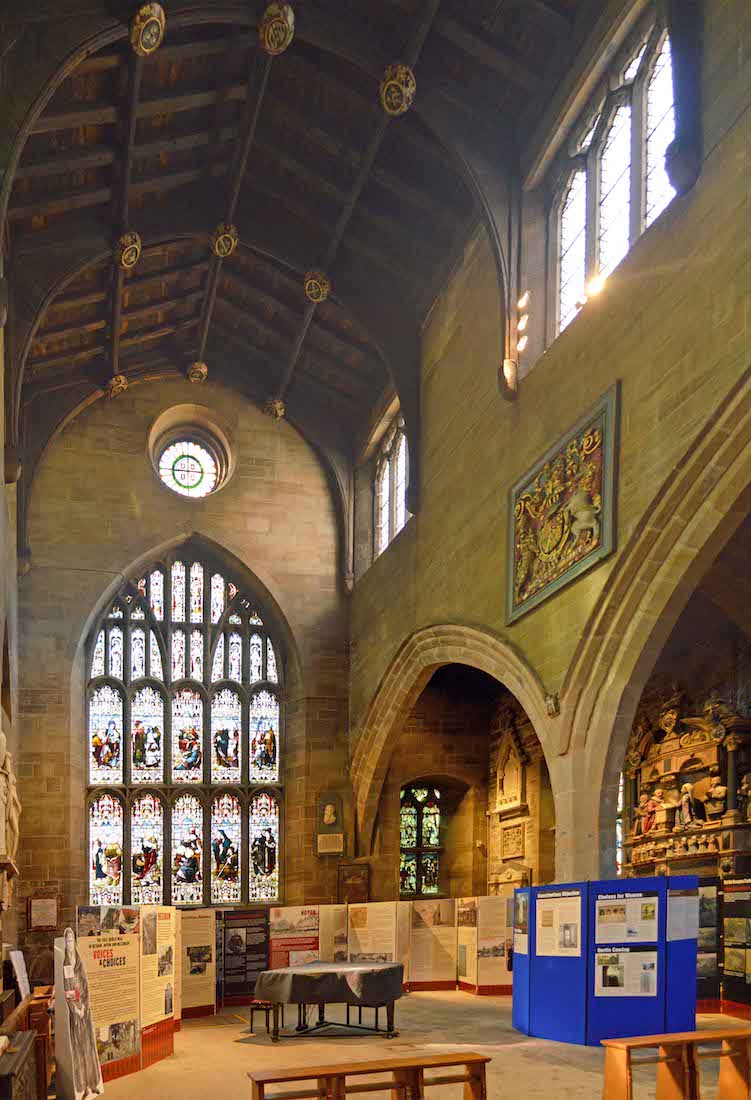
The South transept is presently used very much as a display area. We notice the large stained glass South window with roundel above. To the West is a covered aisle containing some large and interesting-looking monuments. We observe too that there are two smaller stained glass windows in this aisle. A coat of arms is placed above the arches and below the clear clerestory windows. PLAN
42. TRANSEPT AISLE WINDOWS
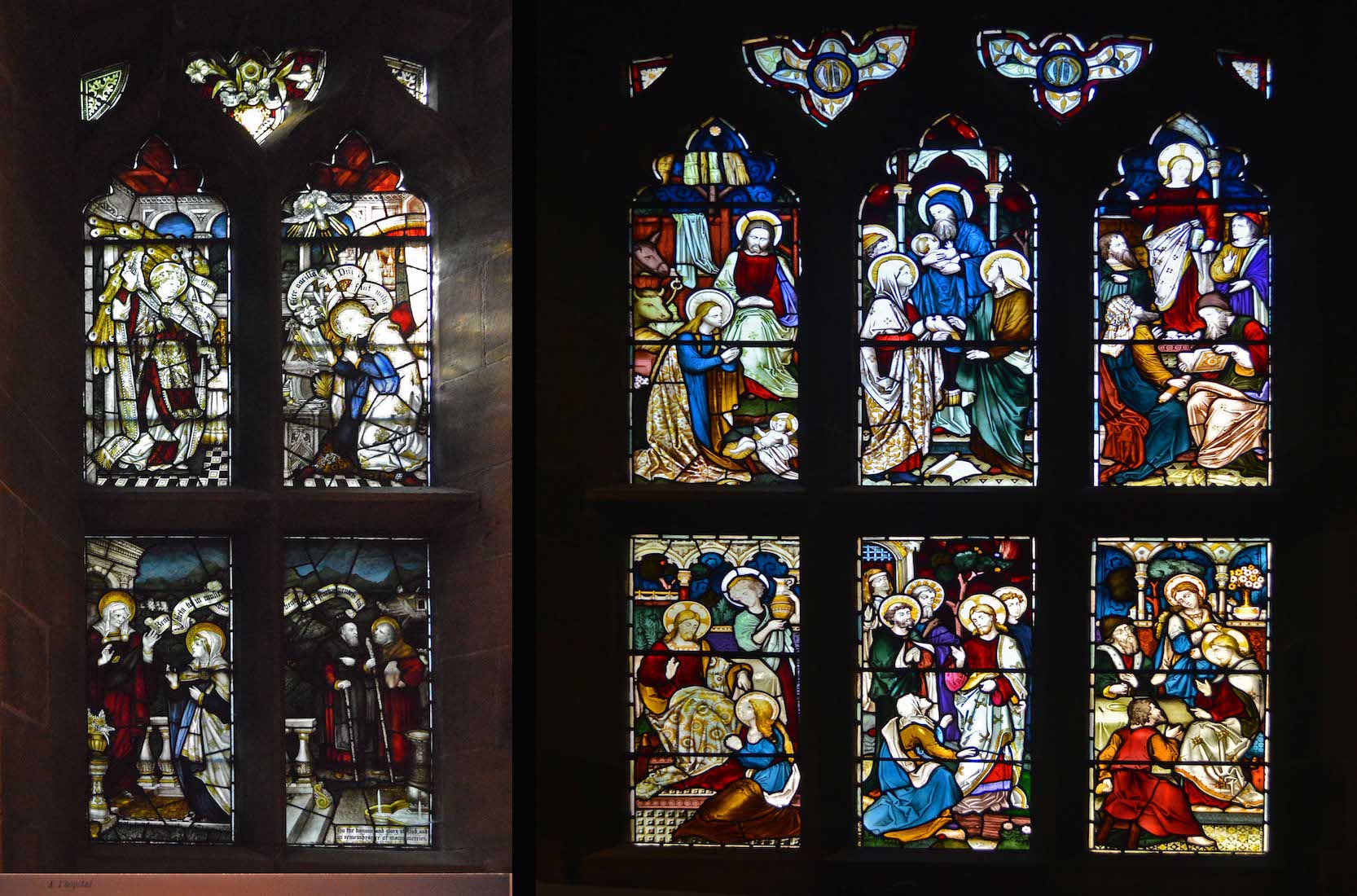
Pictured are the South (left) and West (right) windows. The left window has four panels showing the Annunciation at top, and the encounter of Mary with Elizabeth below. The right window has six panels showing six scenes from the life of Jesus in chronological order: the Nativity, Simeon holding Jesus in the Temple, the boy Jesus teaching in the Temple, Jesus with Mary and Martha, Jesus healing, and the Last Supper.
43. TRANSEPT MEMORIALS
The left memorial remembers merchant and soldier William Woods. At right, the glorious Maddison Memorial of gilded and painted marble remembers three generations of the Maddison family who were prominent townspeople in the sixteenth and seventeenth centuries. The kneeling figures at the front are Henry and Elizabeth Maddison who took their wedding vows in this Cathedral in 1594.
44. ROYAL COAT OF ARMS
The Cathedral has hosted members of royalty over the years. In 1503, Princess Margaret (sister of the future Henry VIII) stopped here to worship on her way to marry King James IV of Scotland. King Charles I also came to church here in 1646 during his ‘imprisonment’ at the nearby Anderson Place during the Scottish occupation of the city in the English Civil War. Most recently, Queen Elizabeth dispensed Royal Maundy from the Cathedral in 1990.
45. SOUTH WINDOWS
In the large window, the two sets of five panels show Jesus teaching the crowds. Under the top set is the text from Luke 12:27: ‘Consider the lilies of the field how they grow; they toil not, neither do they spin’. The text under the lower set reads: ‘O Jerusalem, Jerusalem, which killest the prophets and stonest them that are sent unto thee’. The round window above is structured like a flower with radiating petals. In the centre are four shields, each bearing an (undecipherable) image.
46. SOUTH TRANSEPT EAST
Turning our attention to the East side of the South transept we notice a small altar, and on the East wall, a row of plaques, four more stained glass windows, a large memorial, and two small shields up high. At left, a large arch opens into the South choir aisle.
47. THE TRANSEPT EAST WALL
The two lower windows form a pair with the Risen Christ the central figure in each. In the left window, Christ is flanked by two of his followers – perhaps St John on the right? In the right window Christ stands between Moses on the right, and presumably a representative of the prophets on the left. The central memorial is in memory of Rev Hugh Moises, who was for 41 years the headmaster of the Newcastle Grammar School.
48. CLERESTORY WINDOWS
This is a closer view of the two clerestory windows in the East wall of the transept. Each of the six figures holds a scroll of Latin text, but there appears to be nothing which identifies the figures.
49. HUGH MOISES MONUMENT
This monument in white marble was executed by Flaxman, and erected in 1810 by a subscription amongst his pupils. It represents Religion, in the form of a female, with her eyes fixed on heaven, and leaning on a small pillar which is surmounted by an urn. On the side of the pillar is a medallion of Moises himself. Below is a text in Latin by the Right Honourable Sir William Scott, one of his most distinguished pupils.
50. BACK ACROSS THE NAVE
We now leave the South transept, and head back towards the crossing – where the transepts cross the axis of the Cathedral. There are many items of interest in this view: at right the choir screen with rood cross above, before us the eagle lectern, the organ, and the pulpit, and in the distance a colourful window with a mysterious doorway below!
51. CROSSING AND ORGAN
We would normally expect to find the nave altar at the crossing, but here there is a low table surrounded by candles. Above are more very old roof timbers, decorated with golden bosses. And beyond is the impressive organ. In 1736 Charles Avison (1709-1770), one of the most influential English concerto composers of the 18th century, was appointed organist at St Nicholas Church. Although substantially repaired, extended and modified since it was originally supplied in 1676 by Renatus Harris, the Cathedral’s organ, used by Avison and his son and grandson, is still used today.
52. BRASS LECTERN
The brass eagle lectern which stands near the crossing is the only pre-Reformation lectern in the north of England. The church was ruthlessly ‘modernised’ in 1783 when much of the medieval furnishings and memorials were disposed of. This important piece of liturgical furniture narrowly escaped!
53. ROOD CROSS
The choir screen is topped by a band of exquisitely carved filigree work, and decorated by ornamented gold shields. Above this is a gold cross bearing the crucified Christ, with St John and the Virgin Mary keeping watch. Two golden angels watch from a little distance. This is a treasure!
54. PULPIT
The pulpit was finely carved from Uttoxeter alabaster by R. J. Johnson in the early 1880s The figures portrayed on the pulpit are Saint Philip, Saint Barnabas, Saint Paul, Saint Peter and Saint John the Baptist.
55. NAVE VIEW TO THE WEST
This is the view of the nave from the crossing. As I spend time in this old Church, I find I am appreciating it more as a place of beauty, quietness and prayer – a place to meet with God.
56. TO THE NORTH TRANSEPT
Most of the space in the North transept is occupied by the organ. However, there is an aisle on the West side leading towards an interesting stained glass window, and a doorway opening to a mysterious downward staircase.
57. CRYPT
The staircase turns right and leads down to a small vaulted crypt. This was originally a ‘charnel house’ used to keep bones which were disturbed by fresh burials in the adjacent churchyard. It is currently used as a chapel. From the bottom of the staircase we look Eastwards to a small altar. Above the altar is an interesting round window with five-fold rotational symmetry. We shall find later that this window is also visible from St George‘s Chapel.
58. CRYPT ALTAR AND CRUCIFIX
The simple altar has a kneeling stand in front of it. Behind, two spiral poles with fleur-de-lis ornaments at the top support a tape in front of the window. The crucifix bears a golden brass figure of Christ.
59. CRYPT WINDOWS
The crypt has four beautiful little windows dating from the 1930s, which show everyday scenes. From the left we have: a young lady with a (Newcastle?) dockyard scene behind; a man fishing; a couple playing flute and violin, with a grand piano behind; St Catherine with a sword and a wheel, with two flying angels behind.
60. NORTH NAVE AISLE
This is a good overall view of the North nave aisle with its many memorials and flags. It also gives us some reference points as we leave the crypt and emerge to stand between the organ and the pulpit.


